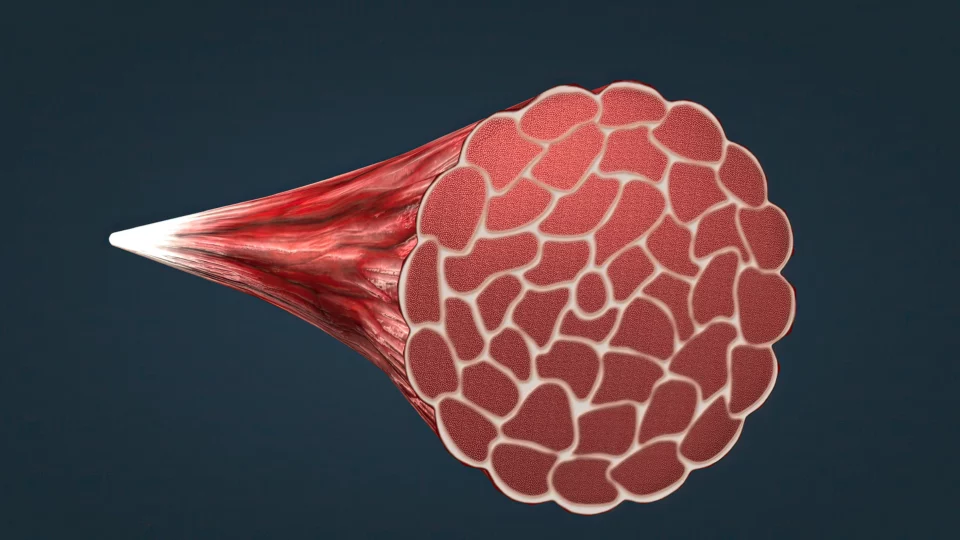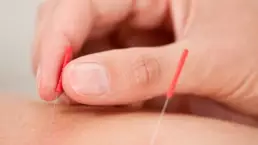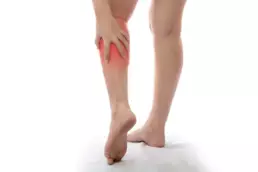As a Dry Needling Chiropractor, I have always been interested in the best treatments to help my patients feel their best. One technique that has gained popularity in recent years is dry needling. Dry needling is a specialized procedure that involves the insertion of thin needles into specific trigger points in the muscles. In this article, I will explore the art of dry needling in chiropractic treatment and shed light on its benefits and effectiveness.
Table of Contents
ToggleUnderstanding Trigger Points
Before delving into the details of dry needling, it is essential to understand the concept of trigger points. Trigger points are tight knots or bands of muscle fibers that can develop in the body due to various factors such as injury, stress, or overuse. These trigger points are often the source of pain and discomfort, restricting movement and affecting overall well-being. By identifying and targeting these trigger points, a Denver chiropractor who practices dry needling can help release muscle tension and alleviate pain. Massage and trigger point injections can also be used to relieve the pain of trigger points.
How Does It Work?
Dry needling works by inserting thin needles directly into the trigger points in the muscles. Unlike acupuncture, which targets specific energy meridians, dry needling focuses on the muscular system. Denver dry-needling chiropractors sometimes insert needles deeper into the muscle tissue than when performing acupuncture. Dry needling aims to stimulate the trigger points, which can help release tension, improve blood flow, and promote the body’s natural healing response.
Here’s how dry needling may relieve pain from trigger points:
- Release of Tight Muscles: Inserting an acupuncture needle into the trigger point can cause the muscles to relax, releasing tension and reducing muscle tightness.
- Improved Blood Flow: Dry needling stimulates blood flow to the area around the trigger point. This increased circulation helps flush toxins and reduce inflammation, promoting the healing of injured or damaged tissue. Increased blood flow also provides oxygen and nutrients (like glucose, the cell’s fuel source) to the muscle tissue, aiding in recovery.
- Desensitization of Nerves: By inserting the needle into the trigger point, we provide a competing sensation to the nervous system, reducing the pain signals sent to the brain. This can result in decreased perception of pain.
- Neuromodulation: Dry needling can also affect the nervous system by altering how pain signals are processed. It may disrupt the cycle of pain signaling between the muscles and the brain, leading to pain relief.
- Release of Endorphins: Inserting the needle into the trigger point can also stimulate the release of endorphins, the body’s natural pain relievers.
Dry Needling Pros and Cons
Like any medical procedure, dry needling has advantages and disadvantages. In this article, we’ll explore the pros and cons of dry needling to help you decide whether it’s the right choice for you.
Pros of Dry Needling:
- Pain Relief: One of the primary benefits of dry needling is pain relief. By targeting trigger points in muscles, dry needling can help alleviate pain associated with muscle tightness, strains, and chronic pain disorders like fibromyalgia.
- Improved Range of Motion: Many individuals who undergo dry needling report experiencing an enhanced range of motion in the treated area. Dry needling increases flexibility and mobility by relieving muscle spasms (trigger points) and improving blood flow to the muscles, allowing individuals to move freely without discomfort.
- Faster Recovery: Compared to traditional treatments, such as medication or physical therapy alone, dry needling has been shown to accelerate the recovery process for specific musculoskeletal injuries. This can be especially helpful for athletes striving to perform their best on and off the field. We also have had great success ensuring our patients continue performing their best at work and home.
- Minimal Side Effects: Since dry needling involves inserting thin needles into the skin, the risk of adverse side effects is relatively low compared to more invasive procedures. Most individuals experience only mild discomfort or temporary soreness at the treatment site, which typically resolves within a few hours to a few days.
- Complementary Therapy: Dry needling can enhance effectiveness with other treatment modalities, such as physical therapy or chiropractic care. By addressing muscle dysfunction at the source, dry needling can complement other therapies and facilitate better patient outcomes.
Cons of Dry Needling:
- Potential Discomfort: While many people find dry needling relatively painless, some may experience discomfort during or after the procedure. Sensations such as tingling, cramping, or aching at the needle insertion site are familiar and usually subside quickly. Still, they can be unpleasant for some patients.
- Risk of Bruising or Bleeding: Although rare, there is a small risk of bruising or minor bleeding at the needle insertion sites following dry needling. This is more likely to occur in individuals prone to bruising or with certain medical conditions that affect blood clotting.
- Limited Research: While growing evidence supports the efficacy of dry needling for certain conditions, the research in this area still needs to be more extensive compared to other treatment modalities. As a result, some healthcare providers may only recommend dry needling as a primary treatment option once more robust scientific evidence is available.
- Cost: Depending on your location and healthcare provider, dry needling sessions can be costly, especially if multiple sessions are required for optimal results. In some cases, insurance coverage for dry needling may be limited or nonexistent, making it inaccessible for some individuals.
- Not Suitable for Everyone: Dry needling may not be appropriate for individuals with certain medical conditions or contraindications, such as skin infections, bleeding disorders, or a fear of needles. Fortunately, with our integrated approach to healthcare, we also provide Acupuncture, Chiropractic, Laser Therapy, and Shockwave Therapy for patients who may not be candidates for Dry Needling.
Dry needling is an effective treatment option for pain relief and improved musculoskeletal function. Still, it is essential to weigh the pros and cons carefully before undergoing this procedure. Consider factors such as potential discomfort, cost, and suitability for your circumstances to decide whether dry needling is the right choice. Consult a qualified integrated chiropractor to discuss your treatment options and address concerns.
The Difference Between Acupuncture and Dry Needling
Confusing Acupuncture with Dry Needling and vice versa is common. While both involve the insertion of needles into the body, the underlying principles and goals are different. Acupuncture is based on traditional Chinese medicine and balances the body’s energy flow. It does this by inserting needles into specific areas of the body based on meridians that cover the body. The meridians are the pathways that “Chi” (life energy) uses to travel throughout the body. The philosophy behind acupuncture is that a blockage of this energy results in illness or disease. Stimulating the flow of Chi energy throughout the body relieves the ache, pain, illness, or disease.
Dry needling targets specific muscle trigger points to release tension and promote healing. Acupuncture needles are left in place for longer, while dry needling involves inserting and removing needles in a shorter time frame.
Safety Precautions and Contraindications
While dry needling can be a safe and effective treatment option, taking certain precautions and considering contraindications is essential. Denver chiropractors who perform dry needling should have appropriate training and certification to ensure the safety of their patients. It is necessary to adhere to strict hygiene practices and use sterile needles to minimize the risk of infection. Additionally, patients with certain medical conditions such as bleeding disorders, pregnancy, or compromised immune systems may not be suitable candidates for dry needling. An integrated Chiropractor should thoroughly assess each patient’s medical history and individual circumstances before recommending dry needling as a treatment option.

What to Expect During a Dry Needling Session
Suppose you are considering dry needling as a part of your chiropractic treatment. In that case, knowing what to expect during a dry needling session is essential. Identifying specific trigger points is the first step to effective Dry Needling treatment. During the session, your chiropractor will insert sterile needles into the trigger points. You may experience a brief sensation similar to a muscle cramp during the needle insertion. The needles are typically left in place for a few minutes, and you may feel a dull ache or tingling sensation. After your treatment with a dry needling chiropractor, you may experience soreness or bruising at the needle insertion sites. Any discomfort from your dry needling treatment should resolve within a few days.
Training and Certification for a Dry Needling Chiropractor
For any provider, it is essential to undergo proper training and certification in dry needling to ensure safe and effective treatment. Integrated Chiropractors can pursue specialized courses and workshops to learn the techniques and principles of dry needling. These courses provide hands-on training and cover needle insertion techniques, anatomy, and safety precautions. By investing in proper training, a dry-needling chiropractor can enhance their skills and offer the best possible care to their patients.
Dr. Doran is an integrative Chiropractor and dry-needling specialist. He has extensive training and over 25 years of clinical experience as a Denver Chiropractor and Certified Chiropractic Acupuncturist.
Finding an Integrative Chiropractor Who Offers Dry Needling Services
Suppose you want to try dry needling as a part of your chiropractic treatment. In that case, finding a chiropractor who offers this service is essential. Referrals from friends and family are a great start. Alternatively, you can search online directories or professional associations for Denver dry-needling chiropractors.
Conclusion
Dry needling is a powerful technique that has emerged as a valuable tool in chiropractic treatment. Targeting specific trigger points can help release tension, alleviate pain, and promote healing. Dry needling offers many benefits and can be used with other chiropractic techniques to provide comprehensive care. However, seeking treatment from a qualified and certified chiropractor is essential to ensure safety and effectiveness.
If you want to try Dry Needling or Acupuncture for your whiplash or sports injury? Schedule a FREE consultation today. Our office can offer you a holistic and effective solution to address your back pain, neck pain, or whiplash injuries. Our Denver Chiropractors are trained to diagnose and treat the underlying causes of your pain or injury. We provide drug-free and non-invasive treatments that promote long-term healing. Our experienced Denver chiropractors are both former collegiate athletes and can skillfully treat your sports injuries as well. We do this with chiropractic adjustments, acupuncture, dry needling, exercises, and other modalities.
Looking for a Chiropractor in Denver? Still have questions? Contact us! Still not sure? Read some of our 5-Star Google reviews and see what patients have to say. We’ve been helping patients in Arvada, North Denver, and Wheat Ridge, Colorado, for over 20 years. Lastly, learn about the conditions we treat and the benefits of the many treatments we provide on our Health Articles page. Ready to start feeling better? Book an appointment online!

Ready for an expert opinion? Get in touch today!
With a legacy of more than 25 years, our team specializes in helping individuals triumph over back pain, neck discomfort, and persistent headaches, all without relying on addictive medications or risky surgical procedures.





